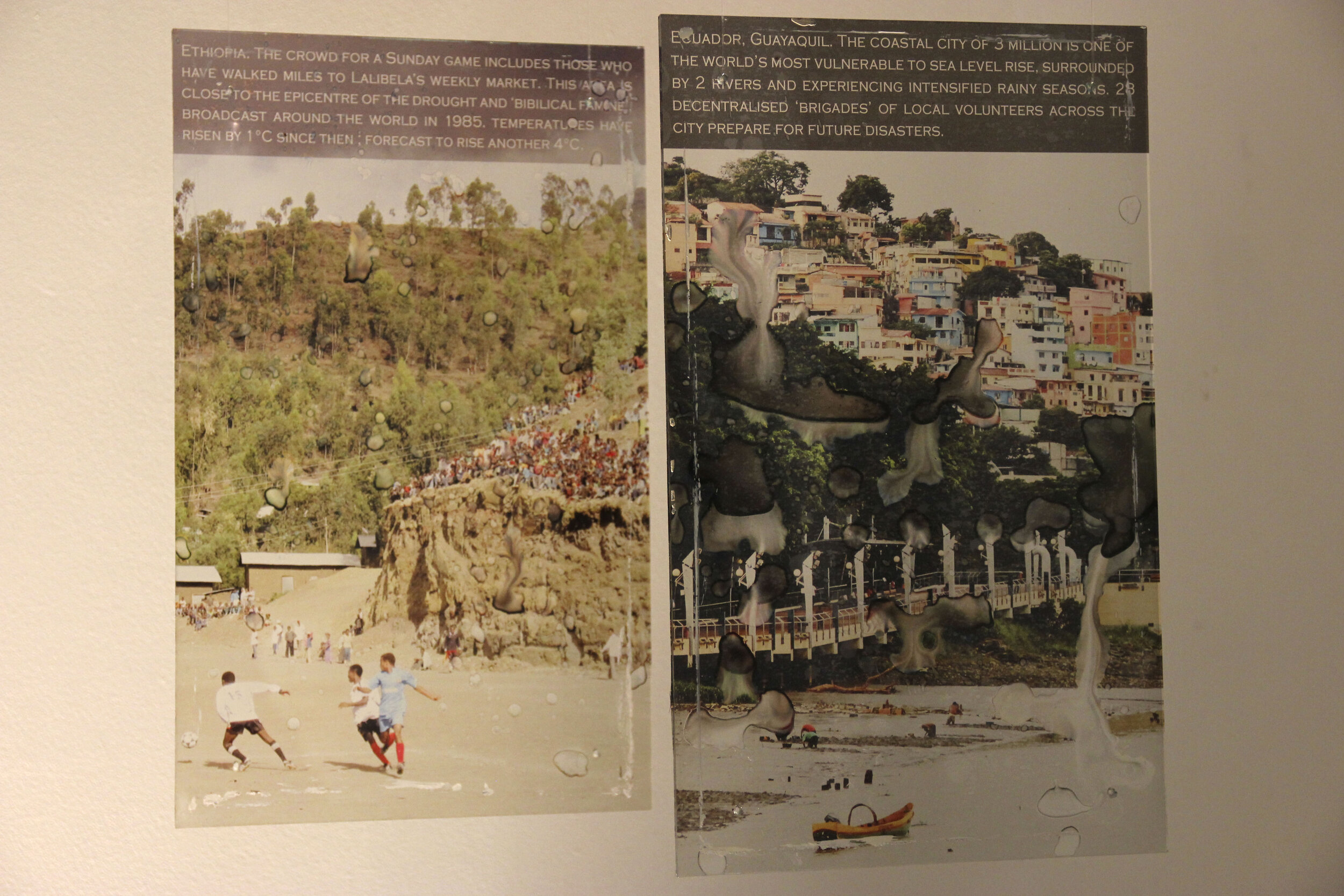glass house (2021)
Layers of South East Asia (2021)
Glass House is an immersive installation relating to climate science and policy. It consists of seven individual works. It’s my attempt to recreate Kurt Schwitters’ Merzbau using environmental data and recycled greenhouse glass.
Layers of Bangladesh presents five glass slides engraved with different types of environmental and demographic information. Layers of South East Asia represented a human-sized counterpoint, with three vast glass engraved panels allowing an embodied experience of population, sea level and rainfall data in the region. Layers of East of England examines the energy systems intrinsically linked with the environment, including data on energy production, transportation, domestic and commercial energy use. In this work, the glass is as originally found, including a patina of grime and broken edges caused by repeated exposure to the elements.
The theme of decay and entropy continues with Greenhouse Panes. Images of the effects of climate change are distorted, washed out and blistered. Broken Arctic Map shows the reduction in the Arctic ice sheet between 1979 and 2020, whilst Climate Discovery arranges 40 pieces of climate evidence around a space, some completely eviscerated by unknown processes.
Glass House asks the viewer to consider all these artworks together, and then participate in a 30 minute discussion with four other people. Each participant then writes an answer to the question “What policy needs to happen?” on a card. At the end I engrave that handwritten information onto shards of broken glass to build the final, growing, participatory artwork: Traces of Policy.
Glass House was made possible by the generous support of the Clore Duffield Foundation and the Arts and Humanities Research Council. The work was part of a practice-research project A Role of Art in Policy? viewable here.
Layers of Bangladesh (2021)
Layers of South East Asia (2021)
Layers of East of England (2021)
Layers of East of England (2021)
Greenhouse Panes (2021)
Greenhouse Panes (2021)
Broken Arctic Map (2021)
Climate Discovery (2021)
Climate Discovery (2021)
Traces of Policy (2021)










